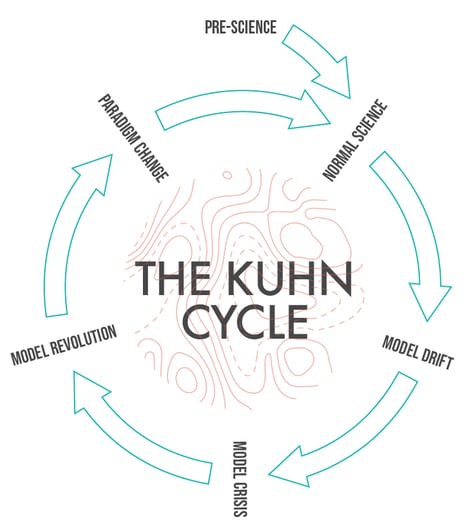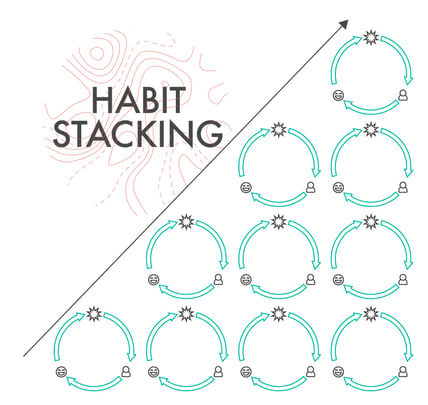
Frameworks for Change: Understanding Consumer Behavior and Habits

"There is nothing permanent except change."
Heraclitus of Ephesus said that, and they nicknamed him the "dark philosopher" for it. You, me - and everyone else in the entire world - are currently part of the largest and longest deprivation research experiment that has ever been run - forcing change and change management at every turn.
From how we order our groceries to how we carve out a new way to work, we are being reminded of an age-old lesson: change is one of the few constants on which to rely.
Yet something feels quite different about this moment of change. It is not simply the scope and scale of the pandemic, the lockdowns, and the shift to remote living and working. It’s also about our visibility into the global scale of change, and into how others are adapting dynamically. Individuals, companies, communities, both large and small are grappling with change. They are altering their responses, facing resistance, tweaking reactions, and evaluating results.
With change being omnipresent, maintaining flexibility is the critical ingredient moving forward. But total flexibility is a difficult place from which to create and test new hypotheses. As a group of cultural anthropologists and design researchers who are endlessly curious about human behavior and habits, we have curated here a list of some of the best frameworks to leverage for understanding change from different perspectives. Frameworks like these regularly find their way into our work as a tool to help us deconstruct complex problems, explain shifts, evaluate big and small changes in consumer behavior and habits, and most importantly, to identify the next steps for action.
Change at 30,000 Feet: Frameworks with a Macro Lens
A big picture view of behavioral change is a good place to start
 We can thank Thomas Kuhn for postulating that a scientific revolution occurs when a new paradigm can better explain the observations and yield a model closer to the current objective reality. There have to be markers to understand if certain experiences are truly undergoing a full paradigm shift. While early adoption or temporary changes can occur, it is important to understand the makings and underpinnings of true long-term change. For example, customers may begin to diverge in the way they access products (e.g., shifting from mobile vs desktop shopping behaviors), but understanding if this is a true full paradigm shift in consumer behavior requires deeper observation.
We can thank Thomas Kuhn for postulating that a scientific revolution occurs when a new paradigm can better explain the observations and yield a model closer to the current objective reality. There have to be markers to understand if certain experiences are truly undergoing a full paradigm shift. While early adoption or temporary changes can occur, it is important to understand the makings and underpinnings of true long-term change. For example, customers may begin to diverge in the way they access products (e.g., shifting from mobile vs desktop shopping behaviors), but understanding if this is a true full paradigm shift in consumer behavior requires deeper observation.
Kuhn’s Cycle is a paradigm shift framework that can be tremendously helpful in identifying where shifting, emergent or divergent behaviors and mindsets are on the journey from status quo to a fully realized paradigm shift. Using the Kuhn Cycle can help teams better interpret consumer behaviors and habits, bringing clarity to whether or not a full paradigm shift is happening, or if we are just seeing the first signals of model drift or model crisis. In this case, the real paradigm shift may still be yet to be discovered.
The Satir Change Model was developed in the 1970s by a well-known family therapist and author, Virginia Satir. This framework was developed from what Satir observed as family groups confronted change in therapy, but it is regularly adapted for business and consumer contexts. Leveraging the Satir Change Model in our work asks us to explore how groups react to change in the process of moving from an established norm to the development of a “new normal”.

Born from a group point of view, this framework may be especially well-suited for problems at a workplace or large-scale system level, such as business or product changes that will fundamentally impact consumers and employees in many areas. Think big operational changes, a shift in policies, corporate structures, new supply chains, digital transformation or enacting a major culture shift. This framework reminds us that we can’t escape the inevitable moments of resistance and chaos before we see integration and normalization. In use, the Satir Change Model can help teams better plan for the inevitable periods of discomfort that occur post-change.
Change at Ground Level: Frameworks with a Micro Lens
Seeing behavioral change through the lens of a microscope
 One of our most loved frameworks that taps into consumer behavior and routines to help identify new opportunities is called The Habit Loop. This framework helps us isolate the “neurological loop that governs any habit” as Charles Duhigg explains in The Power of Habit.
One of our most loved frameworks that taps into consumer behavior and routines to help identify new opportunities is called The Habit Loop. This framework helps us isolate the “neurological loop that governs any habit” as Charles Duhigg explains in The Power of Habit.
In use on research and innovation projects, this framework brings together principles from behavioral science and neuroscience, as well as anthropology and design thinking. The way we use the habit loop in our work is as a tool to zoom in on micro-moments that form everyday habits and routines, even the most mundane ones, like how you go about turning on your TV. By better understanding the three core elements that drive habit formation: the cue (or trigger), the routine, and the reward we can isolate the potential levers for behavioral change and intervention.
Deconstructing habituated routines helps us identify new triggers, new routines, or new rewards (also called “interventions”) that may ultimately help change bad habits or play a role in forming better ones. Using this framework to understand how consumers are dealing with change can be a powerful way of understanding how neuroscience can be employed to nudge not only initial behavior, but a sustained habit.

The Fogg Behavior Model was developed by the best-selling author of Tiny Habits, Dr. B.J. Fogg of Stanford’s Behavior Design Lab. This model was based on the idea that three elements must converge at the same time in order for a behavior change to succeed: Motivation, Ability, and a Prompt. When behavior adoption or habit formation is in disarray or lacks predictability, this framework can provide insight into what is missing. The right inputs or experiences can then be created based on the understanding of the fundamental need to create the desired behavior process. 
Our lives are a series of chain reactions and routines. In his best-selling book, Atomic Habits, author James Clear explores the concept of “habit stacking.” This method calls for building in powerful, compounded triggers to simple actions to create new chains of events. Instead of attempting to reach a big goal in a silo, this methodology encourages the linking of small, simple habits and stacking one on top of the other to trigger a desired action.
An easy example would be the desire to do 50 push ups before going to bed each night. Instead of seeing this goal as an independent action, Clear would suggest linking it with the practically autonomic action of brushing one’s teeth before bed. Because that action requires little effort, the habit of pushups can be stacked on top of teeth brushing so the brain is convinced these are inextricably linked events, thus lowering the mental barriers leading to more success in the adoption of the second action.
This framework can be used to understand the importance of changes in groupings and sequencing of tasks or behaviors. Both product and communications teams should be thinking about how their product is going to “stack” with other smaller habits and routines to effect change with the least amount of friction. This framework can bring focus to the necessary simple, low-stakes habits which could be a precursor to establishing more complex habits and finding new paths to lowering barriers.
The Stickiness of Change: Understanding Adoption
When looking at the progression of uptake, it’s also useful to consider key nuances within change

Diffusion of Innovation (DOI) Theory was developed by E.M. Rogers in 1962 and is one of the oldest social science theories, and is the one you’ve most likely seen before. This framework has held its staying power through the years and continues to help teams identify different behaviors among the general population in the rate of adoption for new innovations.
This framework is helpful when examining why new behavioral interventions or triggers may or may not succeed. It is also especially helpful when exploring topics that require activating an audience.
A Flexible Approach to Change
The important thing to remember with all of these frameworks is that they are just that: frameworks. As such, they can help spark new ways of thinking and perceiving the situations faced - as well as help with monitoring and gauging changes in customer behavior.
There can be no doubt that more change is coming. Again, whether considering your own needs, those of your company or the clients you serve, a viable way forward is to have an open mindset about change, explore various models, and then grab on with gusto so you can minimize “change whiplash” and navigate as efficiently and proactively as possible - while the ground is shifting under your feet.
Why Engaging with Change Matters
As we continue to encounter behavioral change and evaluate the formation of new habits, companies need answers about how prospective or long-term clients are perceiving, resisting, or embracing change. Brands with a solid pulse on behavioral levers before the pandemic most likely continued to monitor change throughout. If this was the case, they are likely to emerge from the pandemic ahead of the curve.
Business never remains static and change is inevitable. The role that frameworks play as a tool for thinking about and understanding consumer behavior and habit changes are key to clarifying the next steps for business impact. The human experience of change is nuanced, complex, and emotional. Frameworks are a way to bring logic, practical application, and actionable steps to inform effective strategies. These tools can remove or filter out the noise surrounding complex issues and help reframe situations for greater insight.
